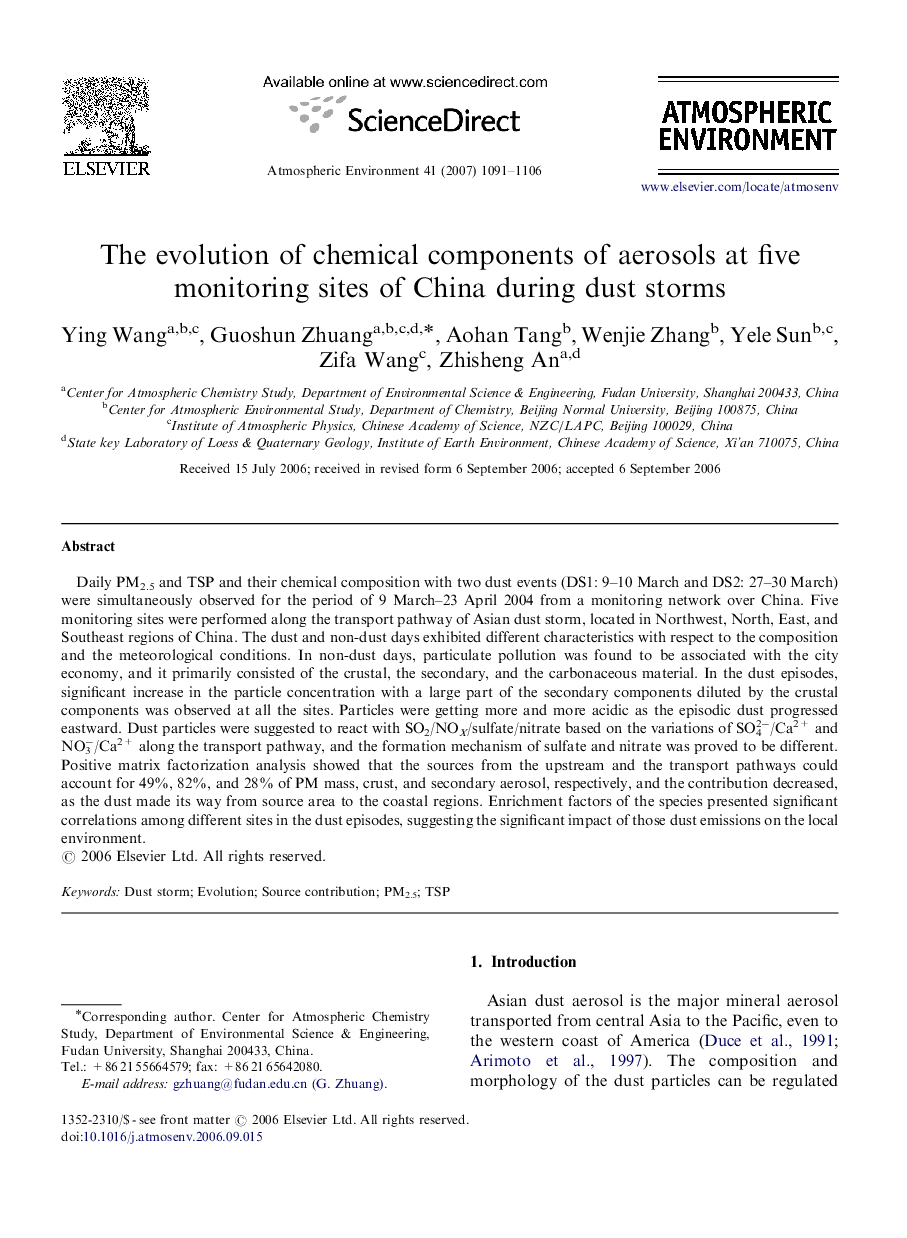| Article ID | Journal | Published Year | Pages | File Type |
|---|---|---|---|---|
| 4443082 | Atmospheric Environment | 2007 | 16 Pages |
Daily PM2.5 and TSP and their chemical composition with two dust events (DS1: 9–10 March and DS2: 27–30 March) were simultaneously observed for the period of 9 March–23 April 2004 from a monitoring network over China. Five monitoring sites were performed along the transport pathway of Asian dust storm, located in Northwest, North, East, and Southeast regions of China. The dust and non-dust days exhibited different characteristics with respect to the composition and the meteorological conditions. In non-dust days, particulate pollution was found to be associated with the city economy, and it primarily consisted of the crustal, the secondary, and the carbonaceous material. In the dust episodes, significant increase in the particle concentration with a large part of the secondary components diluted by the crustal components was observed at all the sites. Particles were getting more and more acidic as the episodic dust progressed eastward. Dust particles were suggested to react with SO2/NOX/sulfate/nitrate based on the variations of SO42−/Ca2+ and NO3−/Ca2+ along the transport pathway, and the formation mechanism of sulfate and nitrate was proved to be different. Positive matrix factorization analysis showed that the sources from the upstream and the transport pathways could account for 49%, 82%, and 28% of PM mass, crust, and secondary aerosol, respectively, and the contribution decreased, as the dust made its way from source area to the coastal regions. Enrichment factors of the species presented significant correlations among different sites in the dust episodes, suggesting the significant impact of those dust emissions on the local environment.
